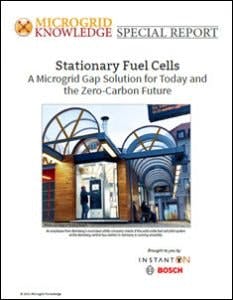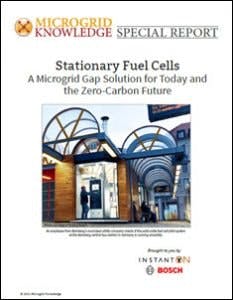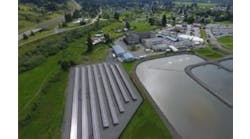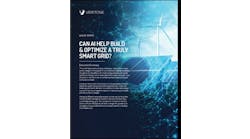In a new special report series brought to you by Microgrid Knowledge, Instant On and Robert Bosch, we explain how fuel cells can be a microgrid gap solution that fills the power gap, the fit gap and the sustainability gap. This sixth article looks at the opportunities that fuel cells present to microgrid developers and other service professionals.
Download the full report.
Not so long ago, it was next to impossible to find a qualified solar installer. Today, the competition is not only fierce but diverse, with all manner of companies from investor-owned utilities to security system installers vying for business. That’s because 10 years ago, solar was in its infancy. Now it is a thriving, multibillion dollar annual business.
Fuel cells today are where solar was 10 years ago. That means now is the time to understand the business opportunities. And it’s not just a space for microgrid developers. Just like with solar, there are some potentially surprising service providers who are well-positioned to offer fuel cell installation. Plumbers and those in engineering, procurement and construction (EPC) should take note: Because of the installation requirements for fuel cells, including gas pipes and potential integration with heat systems, plumbers have the certification required to install the technology, giving them a competitive advantage to enter the business at an early stage.
New technology can be scary or seem risky to installers, but the installation process is essentially the same — if not easier — than the install for diesel generators, natural gas-fired engines and combined heat and power systems.
Expand services and increase customer lifetime value
Fuel cells provide an opportunity for service providers to offer a new product to customers and build ongoing relationships that increase a customer’s lifetime value.
The market is expected to grow rapidly in the coming years, meaning service providers who hold the necessary licenses to install fuel cells will be needed by project developers to handle their growing fuel cell project loads.
Solar PV-battery storage combination microgrids are not always the right solution for customers, particularly C&I customers with high-rise office space and data center facilities. Diesel generators come with higher carbon emissions and NOx and particulate emissions that don’t match every customer’s sustainability commitments or local regulations. Fuel cells give service providers another arrow in the quiver to offer energy solutions to a broader set of customers.
Microgrid developers and many other service providers, including plumbers and EPCs, should build a relationship with a trusted partner who can educate and train them to offer fuel cells to their customers.
Moreover, the opportunity with customers doesn’t stop at installation. It includes commissioning, service and maintenance well into the future. Microgrid developers, DER installers and, as mentioned, even plumbers are well-positioned to adopt fuel cells as an offering. Many smaller service providers might not want to take on the risk of building out a new arm of their business to market and sell to customers. However, they can still benefit from the fuel cell opportunity. The market is expected to grow rapidly in the coming years, meaning service providers who hold the necessary licenses to install fuel cells will be needed by project developers to handle their growing fuel cell project loads.
Next steps
Microgrid developers and many other service providers, including plumbers and EPCs, should build a relationship with a trusted partner who can educate and train them to offer fuel cells to their customers.
Like all new things, there is a learning curve involved. However, as with solar installers a decade ago and, increasingly, those who have learned to navigate the process of installing combined solar and battery storage systems, there is a tremendous business opportunity awaiting those positioned to serve the emerging fuel cell market.
This concludes our special report series, “Stationary Fuel Cells: A Microgrid Gap Solution for Today and the Zero-Carbon Future,” courtesy of Instant On and Robert Bosch. Be sure to download the full report to read an exclusive case study on how California City, California, is using fuel cells to serve critical needs on a large scale, or read the previous articles in the series below:
Stationary Fuel Cells Are a Microgrid Gap Solution
Customers Need a Microgrid Gap Solution. Fuel Cells Are It.
Solid Oxide Fuel Cells: A Definitive Guide
Fuel Cells Offer a Transition to — and a Product for — the Energy Future
The Business Model for Fuel Cells Is a Win for Customers and Installers








